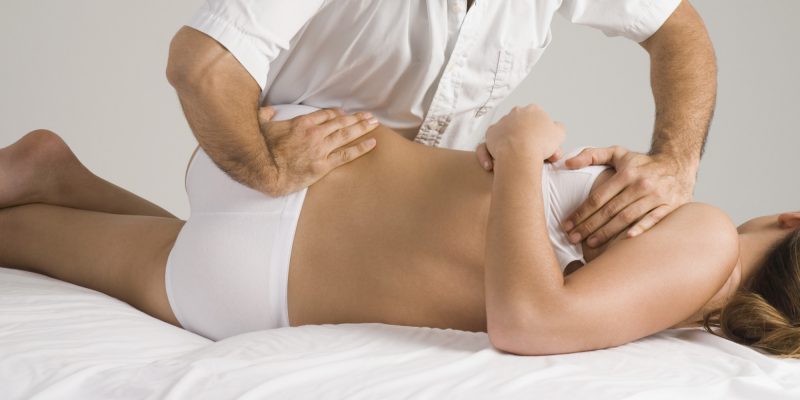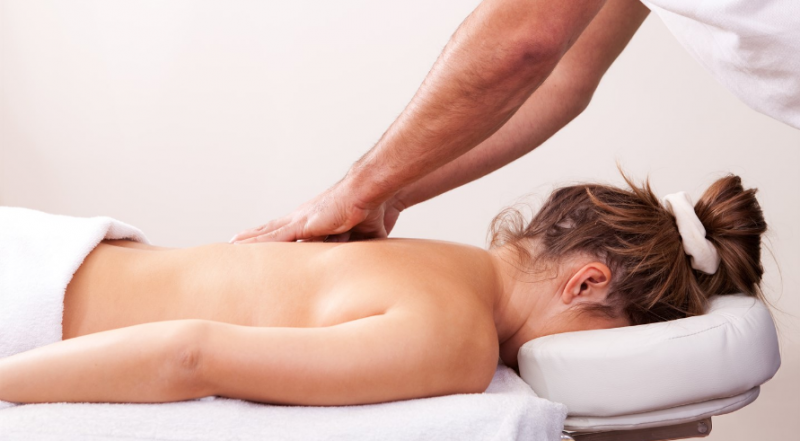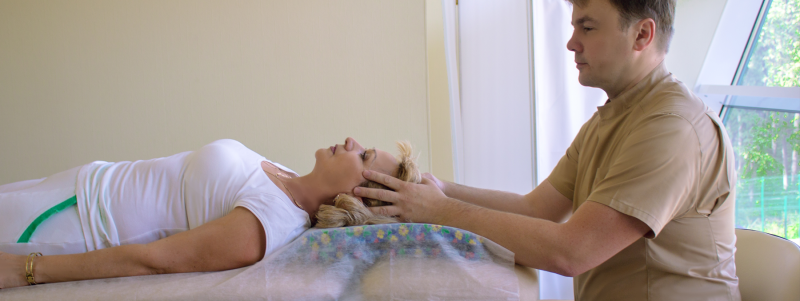If a person is bothered by pain in the spine, he thinks about visiting a specialist who will relieve muscle tension and eliminate unpleasant symptoms. Before making an appointment with the doctor, it is worthwhile to find out what the chiropractor and osteopath are - what is the difference, and what are the principles of their methods.
Material Content:
Who are the chiropractor and osteopath
People with diseases of the musculoskeletal system are familiar with the activities of the manual technician.
This specialist acts on the joints with a massage in a rigid form and uses the following techniques:
- cold compress;
- relaxation technique;
- electric current stimulation.
During the massage, the chiropractor performs a series of manipulations:
- adjusts the vertebra;
- eliminates pinched nerve;
- puts the joint heads in place;
- relaxes muscles.
The effect of treatment may be short-lived. The affected joint is able to shift again under heavy load. In the case of proper treatment, the patient will be able to recover without the use of medications.
The activity of an osteopath is aimed at diagnosing the underlying cause of the disease. The doctor determines the affected organ by palpation, and treats pathological processes with the help of massage effects on the nerves and meninges.
Under the manipulation of an osteopath, disorders in the work of the heart and blood vessels fall. Thus, he performs the functions of a neurologist, therapist, orthopedist.
Chiropractor and osteopath what is the difference
The chiropractor is able to relieve the symptoms and consequences of the disease. An osteopath initially determines the cause of the pathology and acts on it.
Modern medicine considers it incorrect to compare two types of treatment.
However, official science highlights a number of differences between the two methods:
- goals of therapy;
- basic treatment methods;
- risk of complications;
- technique;
- Session Duration
- indications;
- the presence of contraindications;
- soreness.
Thus, the difference between an osteopath and a manual technician is the approach to solving the problem.
Principles of Alternative Medicine Techniques
Manual therapy (chiropractic) is a system of techniques based on the elimination of disorders in the framework of preventive measures and barriers to joint functions. Its purpose is the activation of the motor work of bone joints.
The relaxation technique is used as the main technique. The session brings quick relief and takes from 10 to 15 minutes. Before using chiropractic, it is important to check the patient for contraindications.
The main principles of osteopathy are the restoration of blood flow and the elimination of pain by identifying the causes of violations. Exposure occurs gently and gradually. The technique has a minimal risk of complications. The duration of the session is about 60 minutes.
Osteopathy is an alternative medicine, which is of three types:
- Cranial. Work with the nerves of the skull, the mobility of its bones. It is aimed at reducing headaches and treating CNS pathologies.
- Visceral. Improves blood circulation, treats chronic diseases.
- Structural. Affects joints, muscles and vertebrae.
The technique brings a minimum of pain, unlike chiropractic. This allows you to use it for patients of any age, from small children to the elderly.
What diseases help
Osteopathy helps with the following problems:
- bronchitis and lung pathology;
- prostatitis;
- erectile dysfunction;
- pain during menstruation;
- preparation for childbirth;
- gastric ulcer;
- gastritis;
- liver disease;
- hepatitis;
- pancreatitis
- hemorrhoids;
- neurological abnormalities;
- diseases of the spine and joints;
- ENT diseases.
Osteopathic correction is used while carrying a child to improve the overall well-being of the expectant mother. Sessions help reduce the risk of developing pathologies, calm the manifestations of toxicosis and remove puffiness. Osteopathy is suitable for preparing a lady for childbirth. It makes the pelvic bones more mobile, which facilitates the condition during contractions and eliminates possible fetal injuries.
An osteopath can detect the following diseases in an infant:
- torticollis;
- encephalopathy;
- digestive diseases;
- Cerebral palsy;
- birth injury.
Such a diagnosis of pathologies in babies allows you to correct the situation in childhood. This is very important, because at an older age it is much more difficult to cure ailments.
Indications for the passage of manual therapy are the following diagnoses:
- obesity;
- scoliosis;
- osteochondrosis (stage 1, 2, 3);
- flat feet;
- light hernias between the vertebrae.
The main reasons for contacting the manager are the following problems:
- headache;
- discomfort in the back and neck;
- dislocations;
- stretching;
- limited mobility;
- arthritis;
- arthrosis.
You can not resort to chiropractic to people with cancer, a heart attack or stroke, infections, hypertensive crisis.
What is the difference in the treatment of the musculoskeletal system
The main difference between manual and osteopathic therapies is the methods of exposure. These specialists occupy different positions in terms of approach to human health.
The manual worker is not looking for the cause of the disease, he acts in a specific area. This specialist makes every effort to ensure that the spinal column and joints function in the conditions that exist. The osteopath is engaged in eliminating the cause of the problem.
A chiropractor is struggling with the functional blocks that caused the pain syndrome, and the osteopath stimulates the internal activity of the organs and starts their proper functioning. At the same time, the latter applies more gentle methods of influencing the musculoskeletal system.
Chiropractic treatment takes less time. He has his limitations and contraindications. While therapy with an osteopath lasts a long time and is suitable for almost everyone.
Similarities between techniques
Two areas have a certain degree of kinship.
We are talking about the following similarities:
- specific program for each patient;
- diagnosis and treatment with the help of hands;
- prevention of pathologies of the musculoskeletal system;
- result after the first visit to a specialist;
- lack of medication in therapy;
- release from constriction.
An osteopath and a manual specialist are required to have a higher medical education, knowledge of neurology and anatomy.
How to decide which doctor to see
Immediately say whose help will be more effective, is impossible.
The following recommendations will help resolve this issue:
- To begin with, you should consult a therapist.
- A sharp severe pain will help to cope with the manual.
- If after visiting the chiropractor the problem has returned, it is worth contacting an osteopath.
- Congenital malformations of the skeletal system are initially treated by an orthopedist.
- In the case of pediatric flat feet, the orthopedist and neuropathologist should first come across, and only then the osteopath.
- The main thing is to choose an experienced doctor who knows how to correctly use the technique he offers.
Thus, the manual technician and the osteopath are two different specialties that share only one similarity: the effect on the body occurs with the help of hands.



















